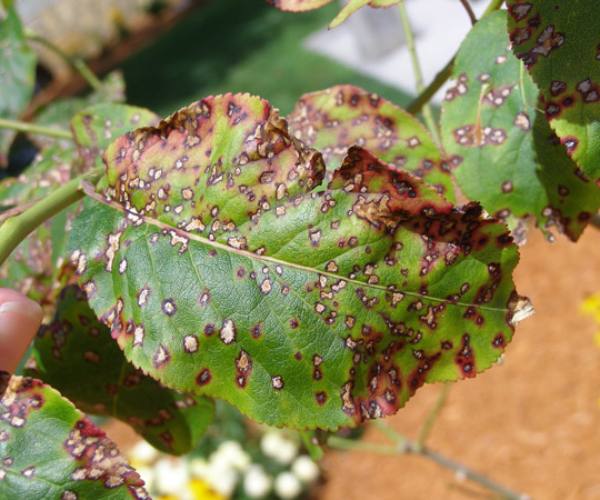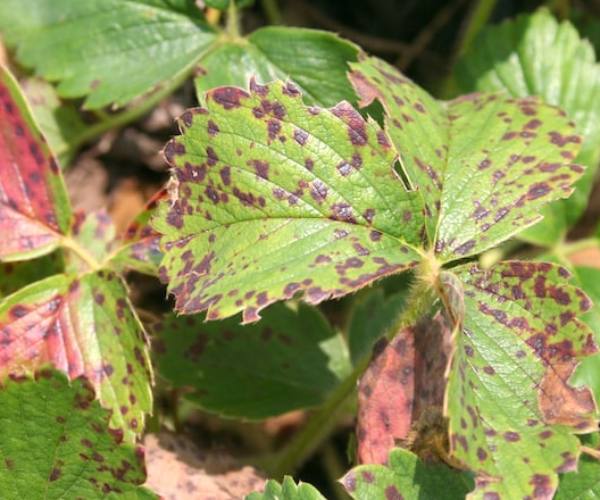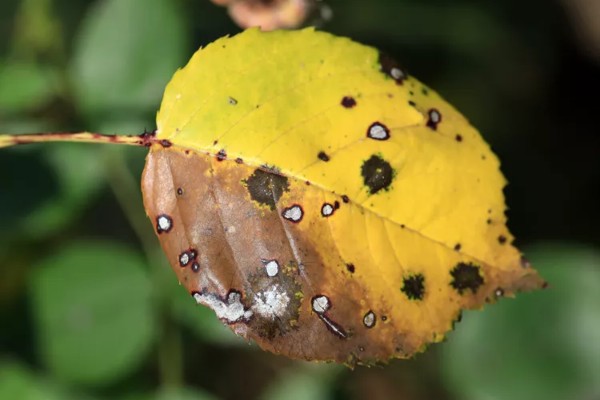Leaf spot is a common plant disease that can affect a variety of plants, from delicate strawberries to hardy lawn grasses. It’s characterized by the appearance of spots on plant leaves, which can vary in size, shape, and color depending on the underlying cause.
While leaf spots can be unsightly and weaken plants, it’s important to understand that it’s not always a death sentence. However, if left untreated, it can spread to other plants and cause further damage.
To effectively control the leaf spot, it’s crucial to identify its cause, whether it’s a fungal or bacterial pathogen. Once you know the culprit, you can implement appropriate treatment measures.
This guide will provide you with valuable information on recognizing leaf spots, understanding their causes, and taking steps to prevent their spread. By following the advice of experts, you can protect your plants from this common plant disease and maintain a healthy and vibrant garden.
What is a Leaf Spot?
Let us begin by knowing what is a leaf spot and how that affects a plant’s overall health. Matt Ramos, owner of Plant Sensation & Co., says, ”Leaf spot is typically caused by fungi or bacteria that infects the plant through wounds, cuts, or natural openings in their leaves,”
Leaf spots come in different sizes, shapes, and colors, depending on what’s causing them (fungus or bacteria), and can change even on the same plant. They can be yellow, red, orange, tan, green, brown, or black. Smaller spots are usually new, while larger ones have been there longer and might have spread.
Ramos says that leaf spot might not kill your plant, but it can make it weaker and spread to other plants if you don’t do anything about it. Sometimes, it can even cause leaves to fall off too early, which can stop fruit from growing.
Also, Read Should You Add Banana Water and Eggshells to Your Plants? Experts Reveal!
How Can I Identify a Leaf Spot?
If you see many discolored spots on your plants, it might be leaf spot. These spots can start on either the top or bottom of the leaves. Some might look see-through or lighter, while others might be darker. They’re usually round, but not always perfectly. If you don’t do anything about them, the spots can get bigger and join together to make large patches.

If bacteria are causing leaf spots, sometimes the middle of the spot might fall out, leaving holes in the leaves. Bacteria can also infect the new shoots, buds, and flowers.
What Causes Leaf Spots?
Almost all plants can get a leaf spot, but different kinds depending on what kind of plant it is. For example, lettuce can get a bacterial leaf spot that starts as small, wet spots and turns into sores. Cherry leaf spot is caused by a fungus and can affect the leaves, stems, and fruit of some cherries.
All kinds of leaf spot-like wet conditions. A lot of rain can make fungal diseases spread, and high moisture is also good for bacterial leaf spot.
“These pathogens thrive in humidity and can spread rapidly under favorable environmental conditions,” says Ramos. “Especially when the plant or leaves have wounds, cuts, and openings.”
How Can I Fix a Leaf Spot?
To prevent the leaf spot from spreading and causing more damage, it’s important to catch it early. Keep a close watch on your plants, especially the undersides of their leaves, where spots might first appear. If you notice any spots, it’s crucial to take immediate action.
Remove the infected parts of the plant and dispose of them correctly. Don’t simply throw them away near your other plants, as this could spread the disease. Instead, place them in a sealed bag and take them far away from your property. This will help prevent the fungus or bacteria from spreading to other plants.
Joel Burnsed, an agricultural and natural resources agent and county extension coordinator with the University of Georgia said that leaf spot is not curable. He also says that once the plant gets the spot, it is impossible to get away from it. However, Burnsed says that if the leaf spot is caused by fungus, using fungicide will be helpful to some extent as it will prevent the disease from spreading to other parts of the plant. Simply put, you can’t cure a leaf spot but can use fungicide to prevent more damage.
What is the Best Way to Prevent a Leaf Spot?
To stop leaf spots, try to keep your plants as dry as possible. Don’t water them from above, as this can leave water on the leaves. Instead, water the base of the plant. If you can’t do this, water them early in the morning so they have time to dry before it gets dark.
To keep the plants dry, make sure there’s enough space between them when they’re fully grown. You might also need to trim them. Weeds can help fungi spread, so get rid of them. If you see any infected spots, cut them off right away and put them in a sealed bag.
“Sometimes fungicides can be applied as a preventative control to prevent leaf spots from starting,” says Burnsed. While not required as often during dry periods, this can be an effective way to ward off leaf spots caused by fungal infections.

Before you buy a plant, always check it carefully for signs of leaf spot or other diseases. Bringing a sick plant into your garden can ruin the health of your other plants. So, take a close look at the leaves, stems, and flowers for any spots, discoloration, or unusual growth. If you see anything suspicious, choose a different plant.
By being cautious and inspecting plants before buying them, you can help protect your garden from leaf spots and other diseases.
Are There Plants That Do Not Get Leaf Spots?
Unfortunately, there are not any plants that do not get affected by leaf spots. That said, there are some plants less resistant to leaf spots than others. Factors like plant variety, environmental conditions, and proper care can also influence a plant’s susceptibility to leaf spot.
If you want plants that are generally less prone to leaf spot issues, there are a few options:
- Succulents: Many succulents have naturally tough leaves that are less susceptible to fungal and bacterial diseases.
- Herbs: Herbs like basil, rosemary, and thyme are often resistant to leaf spot.
- Ornamental grasses: Some ornamental grasses, like fescue and zoysia, are less prone to leaf spots.
Remember that even these plants can develop leaf spots under certain conditions, especially if they are stressed or if the environment is conducive to disease. Regular monitoring and proper care are still essential to prevent leaf spots in any garden.
FAQs
Q: How to prevent leaf spots naturally?
Ans: There is no way to control leaf spots entirely. That said, there are certain tricks and tips you can do to control their spread or try to prevent them from happening in the first place. Proper watering, good drainage soil, and balanced fertilizer can help minimize the risk of a leaf spot in many plants.
Q: How does a leaf spot transmit?
Ans: Spores which are caused by bacteria or fungi are mainly responsible for the transmission of a leaf spot. They can be spread through various modes like insects, water, wind, infected seeds gardening tools, etc.
Q: What is the difference between leaf spot and leaf blight?
A: Leaf spots often have sharp corners and are surrounded by the leaf’s veins. The stems that connect leaves to the plant can also get these spots. If many spots join together, a large part of the leaf can become infected, which is called blight.
Also, Read These are the Best Companion Plants for Roses!
